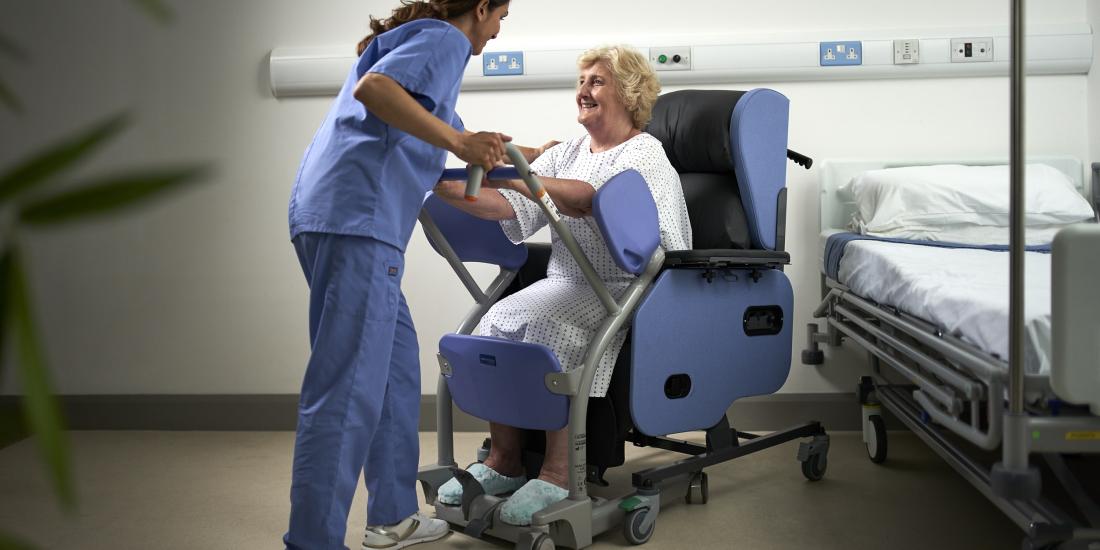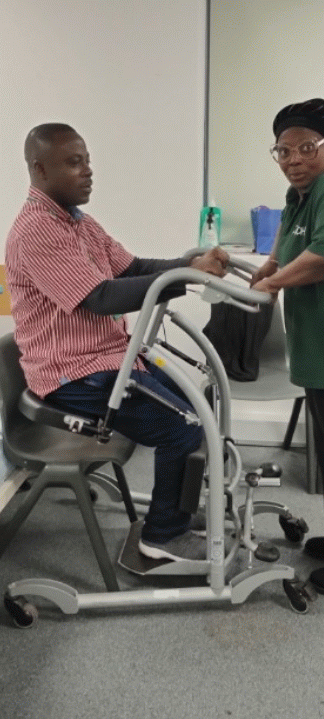
Do you know the impact of your equipment on your service user?
How we use our equipment can have a profound impact on a service user’s progress toward their goals. The thoughtful application of assistive technology, tailored to individual needs, can make all the difference in helping a person achieve their aims. Careful planning in collaboration with the care provider is essential, and this approach can yield significant benefits.
Take, for example, a specific piece of equipment used in a graded approach to mobilisation. This equipment is designed to be adjustable in seven small, precise increments, allowing for gradual progress in the user’s physical abilities.
The height of the equipment can be raised or lowered to suit the needs of the service user at any given time, offering a flexible solution for people like Frederick, whose goal was to improve his mobility and promote his independence.

Initially, Frederick’s ability to stand was limited, so the seat height was set at a higher level to provide extra support. As Frederick’s strength and stability improved over time, the seat height was gradually lowered in small steps. This reduction in height was carefully managed over a 5-week period, in parallel with his improvement in standing ability.
Each week, the seat height was lowered incrementally, and by the end of the 5 weeks, the seat was positioned almost horizontally. This gradual adjustment helped Frederick’s body adapt at a comfortable pace while still pushing the boundaries of his ability.
At the same time, the raise function of the chair, which initially provided extra assistance, was also progressively reduced. This dual approach—lowering the seat height and reducing the raise function—helped to gradually decrease the reliance on assistive features, encouraging greater independence.
By week 6, Frederick achieved his goal of being able to stand independently, marking a major milestone in his rehabilitation journey. This piece of equipment played a crucial role in supporting his progression, and its thoughtful use, in combination with the care team’s strategic planning, enabled Frederick to regain his mobility and independence.
In summary, when used thoughtfully, the right equipment not only supports service users in reaching their goals but can empower them to make significant strides toward independence, proving that careful planning and incremental adjustments can truly make a difference in their outcomes.



